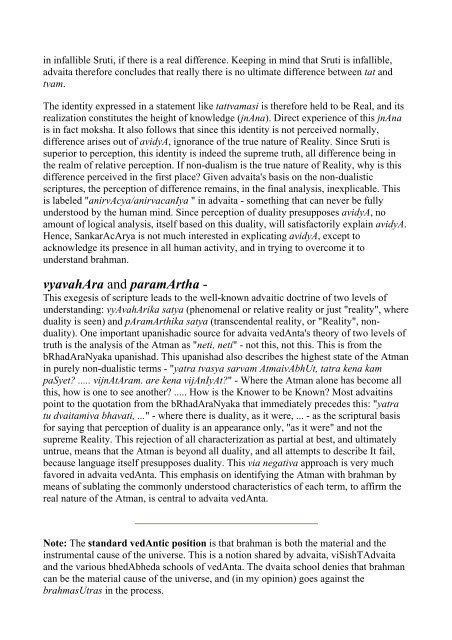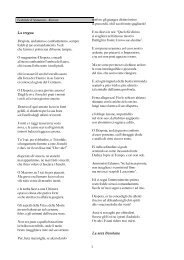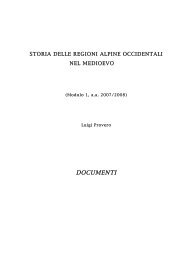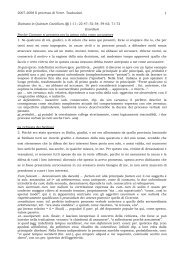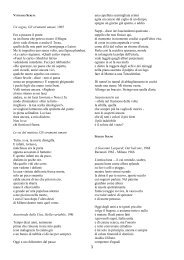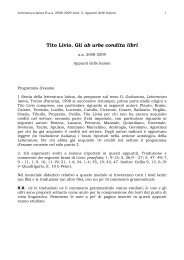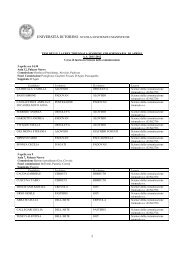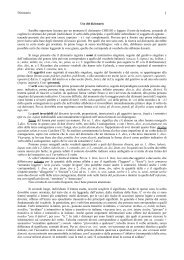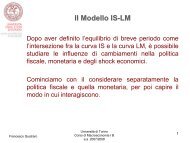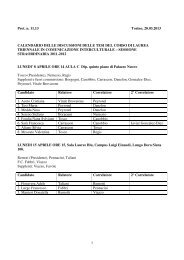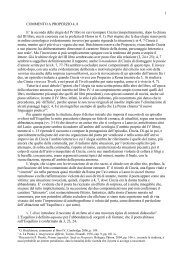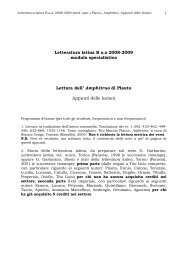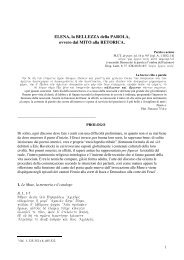ajAti vAda
ajAti vAda
ajAti vAda
You also want an ePaper? Increase the reach of your titles
YUMPU automatically turns print PDFs into web optimized ePapers that Google loves.
in infallible Sruti, if there is a real difference. Keeping in mind that Sruti is infallible,<br />
advaita therefore concludes that really there is no ultimate difference between tat and<br />
tvam.<br />
The identity expressed in a statement like tattvamasi is therefore held to be Real, and its<br />
realization constitutes the height of knowledge (jnAna). Direct experience of this jnAna<br />
is in fact moksha. It also follows that since this identity is not perceived normally,<br />
difference arises out of avidyA, ignorance of the true nature of Reality. Since Sruti is<br />
superior to perception, this identity is indeed the supreme truth, all difference being in<br />
the realm of relative perception. If non-dualism is the true nature of Reality, why is this<br />
difference perceived in the first place? Given advaita's basis on the non-dualistic<br />
scriptures, the perception of difference remains, in the final analysis, inexplicable. This<br />
is labeled "anirvAcya/anirvacanIya " in advaita - something that can never be fully<br />
understood by the human mind. Since perception of duality presupposes avidyA, no<br />
amount of logical analysis, itself based on this duality, will satisfactorily explain avidyA.<br />
Hence, SankarAcArya is not much interested in explicating avidyA, except to<br />
acknowledge its presence in all human activity, and in trying to overcome it to<br />
understand brahman.<br />
vyavahAra and paramArtha -<br />
This exegesis of scripture leads to the well-known advaitic doctrine of two levels of<br />
understanding: vyAvahArika satya (phenomenal or relative reality or just "reality", where<br />
duality is seen) and pAramArthika satya (transcendental reality, or "Reality", nonduality).<br />
One important upanishadic source for advaita vedAnta's theory of two levels of<br />
truth is the analysis of the Atman as "neti, neti" - not this, not this. This is from the<br />
bRhadAraNyaka upanishad. This upanishad also describes the highest state of the Atman<br />
in purely non-dualistic terms - "yatra tvasya sarvam AtmaivAbhUt, tatra kena kam<br />
paSyet? ..... vijnAtAram. are kena vijAnIyAt?" - Where the Atman alone has become all<br />
this, how is one to see another? ..... How is the Knower to be Known? Most advaitins<br />
point to the quotation from the bRhadAraNyaka that immediately precedes this: "yatra<br />
tu dvaitamiva bhavati, ..." - where there is duality, as it were, ... - as the scriptural basis<br />
for saying that perception of duality is an appearance only, "as it were" and not the<br />
supreme Reality. This rejection of all characterization as partial at best, and ultimately<br />
untrue, means that the Atman is beyond all duality, and all attempts to describe It fail,<br />
because language itself presupposes duality. This via negativa approach is very much<br />
favored in advaita vedAnta. This emphasis on identifying the Atman with brahman by<br />
means of sublating the commonly understood characteristics of each term, to affirm the<br />
real nature of the Atman, is central to advaita vedAnta.<br />
Note: The standard vedAntic position is that brahman is both the material and the<br />
instrumental cause of the universe. This is a notion shared by advaita, viSishTAdvaita<br />
and the various bhedAbheda schools of vedAnta. The dvaita school denies that brahman<br />
can be the material cause of the universe, and (in my opinion) goes against the<br />
brahmasUtras in the process.


